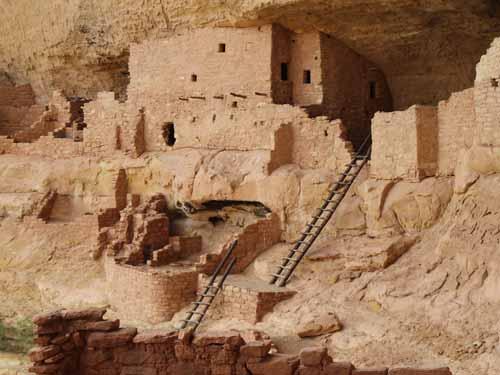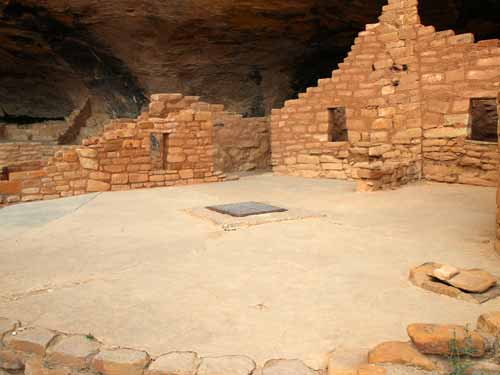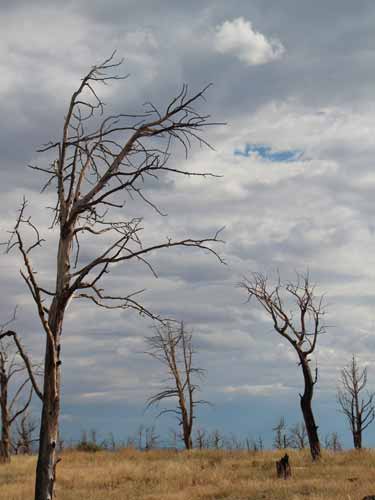
A family of ravens fought and squawked nearby.


Again, a bit more obvious picture of how building a taller structure could reach higher ledges in the alcove.


This is all original wood.


A clearer picture of the jacal construction

Pictographs of animals, perhaps?

This hand is a bit more obvious.

Numerous dots on the ceiling... stars again?

This is how the Great Kiva would have looked, completely covered over with a very thick and stable roof to form a plaza. The only evidence of the large pit underneath would be the hole in the center (now covered with a protective grate). It probably would have been a place for community gathering.

A glimpse inside another kiva that hasn't been reconstructed.
The center opening would have been above fire pit. Air vents and a ventilator would have ensured that the fire didn't go out and the room didn't get too smoky. The air deflector made sure that gusts of wind didn't blow the fire out. The only real question is the sipapu. Every kiva has one. But since we aren't sure of the religion back then, our best guess is based on the stories of their ancestors, that it is some kind of sacred space.
There does't seem to be any evidence of class division between cliff dwellers and those who lived on the mesa tops. Current tribes now egalitarian and archeological records don't point to any heiarchy either. Basically, there was no king or royalty.
The average life span was round 45 years old. Some people did live into their 60's but infant mortality was very high.
It is hard for us to know what was happening socially, but we do know what happened environmentally. Eventually they ran out of nearby firewood. The soil became unhealthy from overuse. There were fewer animals as well. Water probably became regulated by the community. There was less trade and more local products.
The last quarter of the 1200's was a time of drought and crop failures, but these people had survived droughts before. Perhaps this was simply the last straw in a depleted land. Unlike original beliefs that they just 'disappeared', we know today that they simply moved to places like New Mexico, Utah and Arizona and live on in the tribes of today.


Looking back...

... and continuing forward.
We took an easier path down from the ruins, then crossed over to return up the path we had come down on. We waited briefly for the tram, which eventually arrived and took us back to the parking lot. There was still much more to see in the area, but we had to leave. The Wetherill Mesa gets locked up in the evening so we had to be out past the gates or we would be trapped.


The sun was starting to get low on the long drive off the mesa... and apparently this was the time when the animals were out! We first spotted a coyote sitting alongside the road. I stopped and it casually trotted across the street and right past the car into the grass. A mere few moments farther down the road, the exact same thing happened with a black bear! It actually got SO close to the passenger side of the car, that it was difficult for me to get a picture of it from the driver's side!

